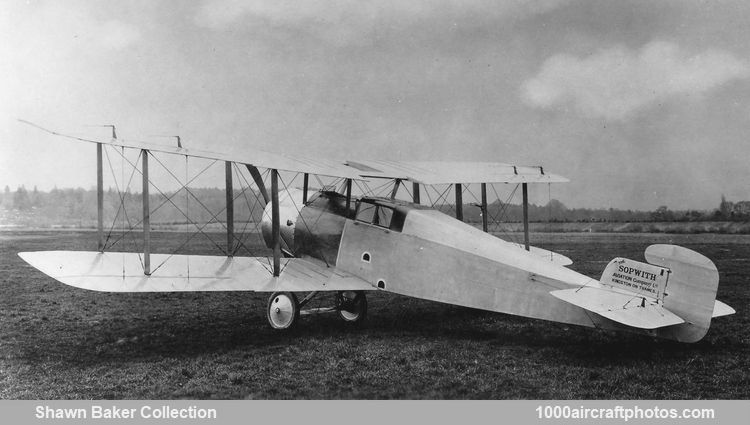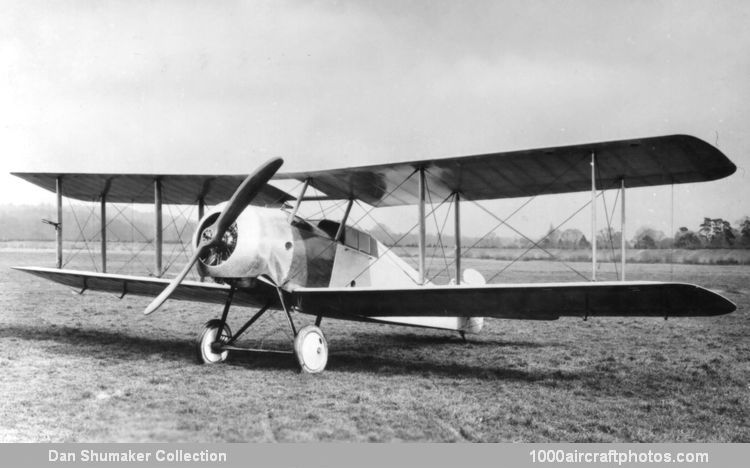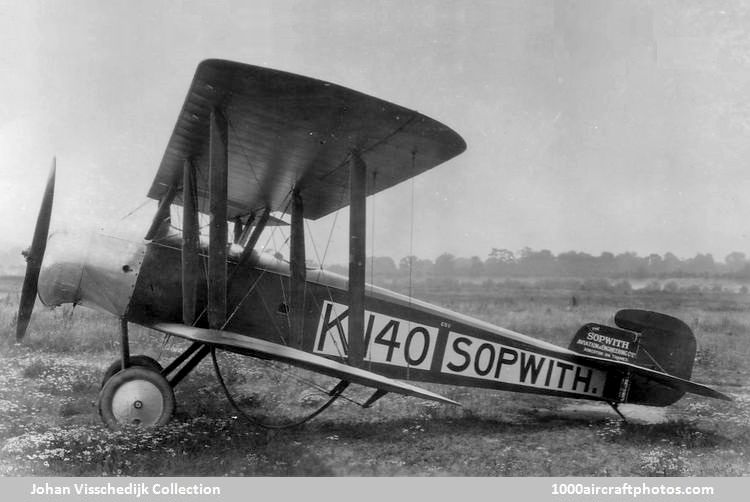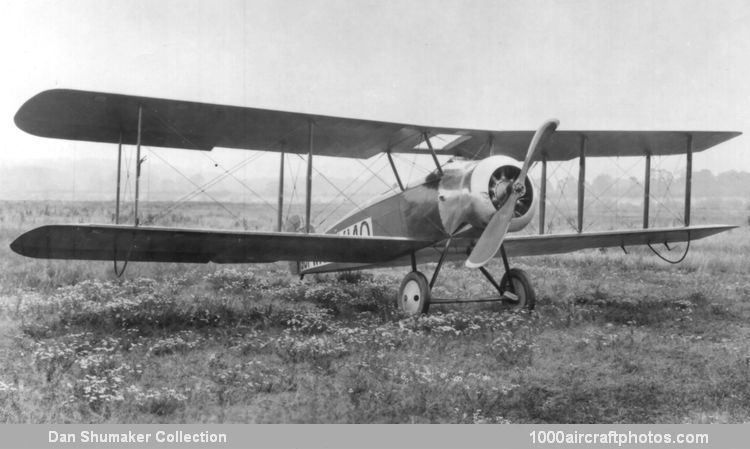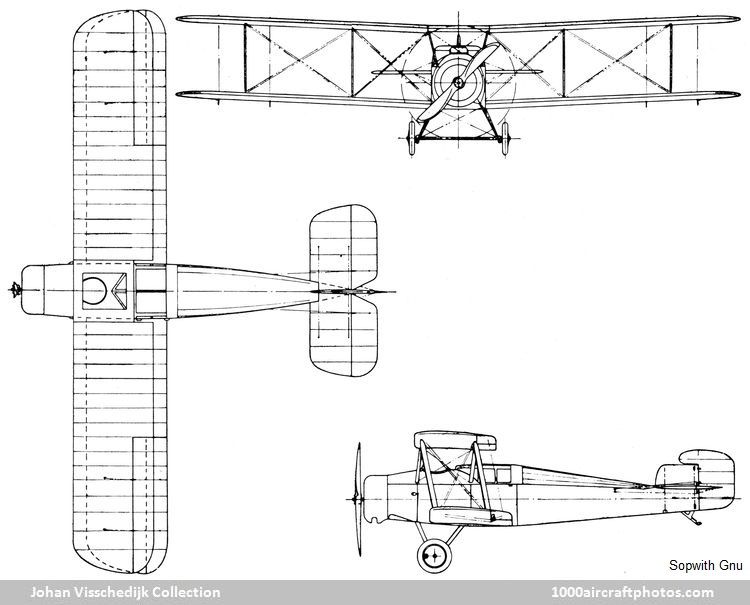10/31/2023. Remarks by
Johan Visschedijk: "Introduced in March 1919, the Sopwith Gnu three-seat tourer or taxi machine was one of the first cabin aircraft designed for civil use and was an orthodox two bay biplane of fabric-covered wooden construction, seating the pilot in an open cockpit under the center section, one panel of which was left open for improved vision. Two passengers sat side-by-side in the rear cockpit under a hinged and glazed cabin roof.
(
Dan Shumaker Collection) APS No. 3301
Fresh from his historic mid-Atlantic rescue, Harry Hawker flew his wife from Brooklands Aerodrome, Weybridge, Surry to Hendon Aerodrome, London, in the Bentley B.R.2 powered prototype Gnu, registered K-101, on 29 May 1919, to attend the reception given to the crews of the successful American Navy-Curtiss transatlantic flying-boats. The honor of making the first passenger flight in the Gnu, piloted by the idol of the aviation world, fell to a Miss Daisy King of Leeds, who paid 60 guineas in an auction conducted by the English aviation pioneer Claude Grahame-White. K-101 then went to Southport to give pleasure flights piloted by C. D. Barnard but was damaged beyond repair on June 10 after a life of but a few weeks.
Twelve production Gnus were completed, the first of which, K-136 (c/n 2976/1, later reregistered G-EADB), flew to Hendon in formation with the prototype. In common with several later specimens it was powered by a 110 hp Le Rhone but the cramped cabin was not popular.
(K-140) (
Dan Shumaker Collection) APS No. 3299
Commencing with the next machine, K-140 (c/n 2976/2, later reregistered G-EAEP), the majority of Gnus were open models.
Although the post-war slump ended production in six months, several were sold abroad including K-169 (c/n 2976/5, later reregistered G-EAHQ), G-EAIL (c/n 2976/6), and G-EAIM (c/n 3005/2). These were shipped to the Larkin-Sopwith Aviation Co. Ltd. in Melbourne.
As G-AUBX and G-AUBY they gave quite outstanding service for many years, and one, piloted by W. 'Skipper' Wilson, won the speed prize in the first Australian Aerial Derby at Mascot, Sydney, in 1920. In 1924 they joined Sopwith's Wallaby and Antelope on the Adelaide-Sydney mail route of Larkin's pioneer company, Australian Aerial Services Ltd., and were thereafter based at Hay, mid-point of the route. G-AUBX was destroyed when taking off from Mildura on 23 August 1924 but G-AUBY was re-engined with a 110 hp Le Rhone and later with a Wright Whirlwind with which it came 11th in the East-West Air Race in September 1929 piloted by K. R. Farmer. The third Gnu (G-EAIM) was not registered, believed to be used for spares.
Six Gnus, G-EAFR (c/n 3005/1), G-EAGQ (c/n 2976/4) and G-EAME to G-EAMH (c/n 3005/4, 3005/6, 3005/5, 3005/3) remained unsold in the Kingston works when Sopwiths closed down in September 1920. The cabin model exhibited without registration at the Olympia Aero Show in July 1920 was probably G-EAMG.
Only the first and fourth production Gnus had lengthy careers in the United Kingdom. These were the cabin model G-EADB and the open cockpit G-EAGP (c/n 2976/3). The latter became the property of Lt. Col. F.K. McClean and won the Grosvenor Trophy at Lympne on June 23, 1923, piloted by Flt. Lt. W.H. Longton. The 404 mls (650 km) course round Southern England was completed at an average speed of 87.6 mph (141 kmh), the Filton-Croydon leg being covered in 62 minutes. The other Gnu, G-EADB, was owned and flown during 1923-24 by Brooklands racing driver E.A.D. Eldridge but in June 1925 was sold to J.R. King who entered it for the Lympne Races on August 1-3, 1925. The Gnu's performance was not outstanding, and G-EADB came fourth at 86.95 mph (140 kmh) in the 100 mls (161 km) International Handicap, and fifth at 84.86 mph (136.57 kmh) in the 50 mls (81 km) Private Owners' Handicap.
Both Gnus were then purchased by the Southern Counties Aviation Company of Shoreham and spent the remainder of the 1925 season giving pleasure flights from fields along the South Coast. In the following year they were taken over by G.M.Lloyd, a professional stunt man, who extended their activities to embrace the East Coast and to include exhibition flying to attract would-be passengers. It was their undoing, the first to go being G-EADB, which stalled on the approach to a field at Horley, Surrey, on March 2, 1926, injuring the pilot, L. R. Goodman. Two months later G-EAGP spun into a cemetery at King's Lynn, the pilot, A.O. Bigg-Wither, being killed after the engine failed at the conclusion of a wing walking exhibition by G.M. Lloyd. A small passenger, Arthur Golding-Barrett (later to be Avro test pilot) was unscathed.
